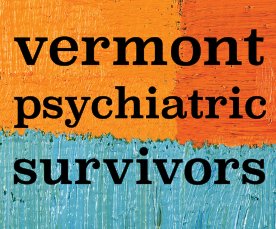In 2009, when Dartmouth professor Elizabeth Carpenter-Song launched what would become a decade-long ethnographic study of homelessness in the Upper Connecticut River Valley, plenty of its residents, by her account, didn’t know that a homeless population existed in the area at all.
Today, the adjacent towns of Norwich, Vermont, and Hanover, New Hampshire, continue to place at or near the top of median household income rankings in their respective states, but the consequences of their region’s increasingly insurmountable cost of housing have become impossible to ignore. Unfortunately, stories like the ones in Carpenter-Song’s Families on the Edge: Experiences of Homelessness and Care in Rural New England (MIT Press, 2023) have doubtless grown more common over the years.
The author calls herself an “anthropologist of mental health,” and much of her “person-centered” scholarship has focused on individuals caught in what she calls “the psychiatric net.” Families on the Edge, her first book, showcases her continued interest in people’s experiences of the mental health system. That system figures prominently in the lives of the five families who became her subjects after meeting her at a shelter in Vermont where she’d come to do research.
According to Carpenter-Song, “there is no single path that leads a family into homelessness. Indeed, to speak of pathways overlays a sense of linearity onto experiences that are instead a thorny tangle – a gradual accretion of misfortune, the subtle erosion of relationships, or the incremental fraying of a life shadowed by trauma and mental illness.”
This is not to mystify the central, big-picture cause of homelessness, which Carpenter-Song identifies, again and again, as a shortage of housing. Still, every victim of New England’s housing crisis has a unique tale to tell. Some contain surprises. Amid increased attention in the press, rural homelessness remains, at times, misunderstood or even invisible.
Carpenter-Song challenges “definitions of homelessness [that] tend to focus on rooflessness, which does not take into account varied and complex housing ‘mobilities’ in rural areas.” Attuned to what she terms “housing instability” or “housing distress,” she argues that “categorical distinctions between the rural homeless and rural poor people may be spurious.”
When these five “families on the edge” arrived at the shelter, most had come not from a street corner or a tent in the woods but from a motel room that they could no longer afford or a couch belonging to a friend or relative with whom they could no longer get along. Months later, as they left for subsidized or shared apartments, Carpenter-Song wondered whether her study had ended. She decided it hadn’t.
Over the years, evictions followed, or else doubled-up households collapsed under the weight of interpersonal conflict. Families hopscotched from one ill-suited or temporary arrangement to another. Cheap housing in remote areas came with difficulties in accessing transportation, childcare, and employment – not to mention loneliness, which exacerbated challenges with mental health and substance use. In spite of the “resource-rich” Upper Valley’s “kaleidoscope of professional services,” their interventions rarely reversed these downward spirals.
Carpenter-Song chronicles her subjects’ engagement with counselors and psychiatrists as a string of “missed opportunities and unintended consequences.” Some resisted psychotherapy, contending, for instance, that doctors “haven’t been through the same things, so it doesn’t help. They can say, ‘I understand,’ but they really don’t.” Incidentally, shelter staff reportedly discouraged guests from turning to one another for counsel, cutting off a potentially effective source of peer support.
The author’s ambivalent view of professional mental health services acknowledges a risk, in the treatment of homeless individuals especially, “of medicalizing social and structural inequalities.” Her subjects echo the concern, particularly as it pertains to psychotropic medication. “You’re not dealing with the problem. You’re just masking it. And you’re just walking around in a cloud,” one says.
Carpenter-Song laments a “misalignment between biomedical and individual, familial, and community perspectives” in their understandings of human suffering, which for her explains, in part, “why the majority of people with mental health problems in the United States do not seek professional treatment.” This lamentation contains, however, a tacit belief in the basic legitimacy and necessity of such treatment, and when the author’s subjects disagree, she tends to pathologize their refusals to accept professional help as manifestations of “the bootstrap mentality of rural New England.”
Yet her own work reveals the invasive and sometimes even punitive character of this same help. While explicitly rejecting a Foucaldian view of both medical and social services and emphasizing instead the “well-intentioned” nature of the workforce in these sectors, Carpenter-Song (deliberately or not) paints a particularly disturbing portrait of the Vermont Department for Children and Families, which, according to her research, removes kids from their homes at a higher-than-normal rate compared to other states.
The author largely blames “limited funding and caseloads far exceeding recommended standards” for what might look like ill-considered decisions by DCF, but she also cites national data suggesting a bias against parents with psychiatric labels, especially those who’ve experienced hospitalization. Such mothers and fathers must prove to state officials that they’re healthy enough to care for their kids, but in Carpenter-Song’s telling, it is, above all, the “traumatic rupture” of the loss of their children (and of their own identities as parents) that has seriously damaged their mental health in the first place. In one case, the pain of DCF’s seemingly arbitrary unwillingness to return them, even when the parents believe they have fulfilled the state’s conditions, becomes the final blow.
While Carpenter-Song’s sometimes clunky scaffolding of academic analysis can occasionally blunt the impact of the real-life stories she reports, their immense pathos mostly shines through, ultimately calling the reader to action. The author’s concluding policy prescriptions inevitably center the need for greater investments in affordable housing.
She also offers guidance on “reimagining supportive services for families,” having witnessed the failures of existing services at various crucial junctures in the lives spotlighted by her book. The author doesn’t seem to perceive a tension between investing in targeted services and investing in universal goods, like housing, public transit, and childcare, even as her work comes close to calling into question the fundamental logic of the former approach, with its tendency not only to surveil and police homeless families but also to burden them with appointments and paperwork of dubious value, as if for the purpose of generating a deliberately unpleasant simulacrum of a “normal life” with job responsibilities and bills to pay.
“Health and social services need to meaningfully attend to the lived realities of surviving in poverty,” Carpenter-Song writes. She wants providers to receive increased “training in the social determinants of health and trauma-informed care.” But their interactions with clients should also include “honest discussions of the usefulness and limitations of specific therapeutic modalities.”
Mental health professionals must be honest with themselves about these limitations first. Carpenter-Song quotes an unnamed “community psychiatrist,” a paragon of modesty in describing his own approach.
“Don’t try to help. Try to understand what this individual is experiencing. Try to understand how the individual has developed his or her personality and relationships based on a life of experiences,” he says. “Diagnosis is trivial, especially in comparison to context. Medical solutions for social problems are expensive and ineffective. Who does this individual trust to help? It’s rarely a doctor or social worker. How does he or she learn? It’s unlikely to be from professional advice.”

